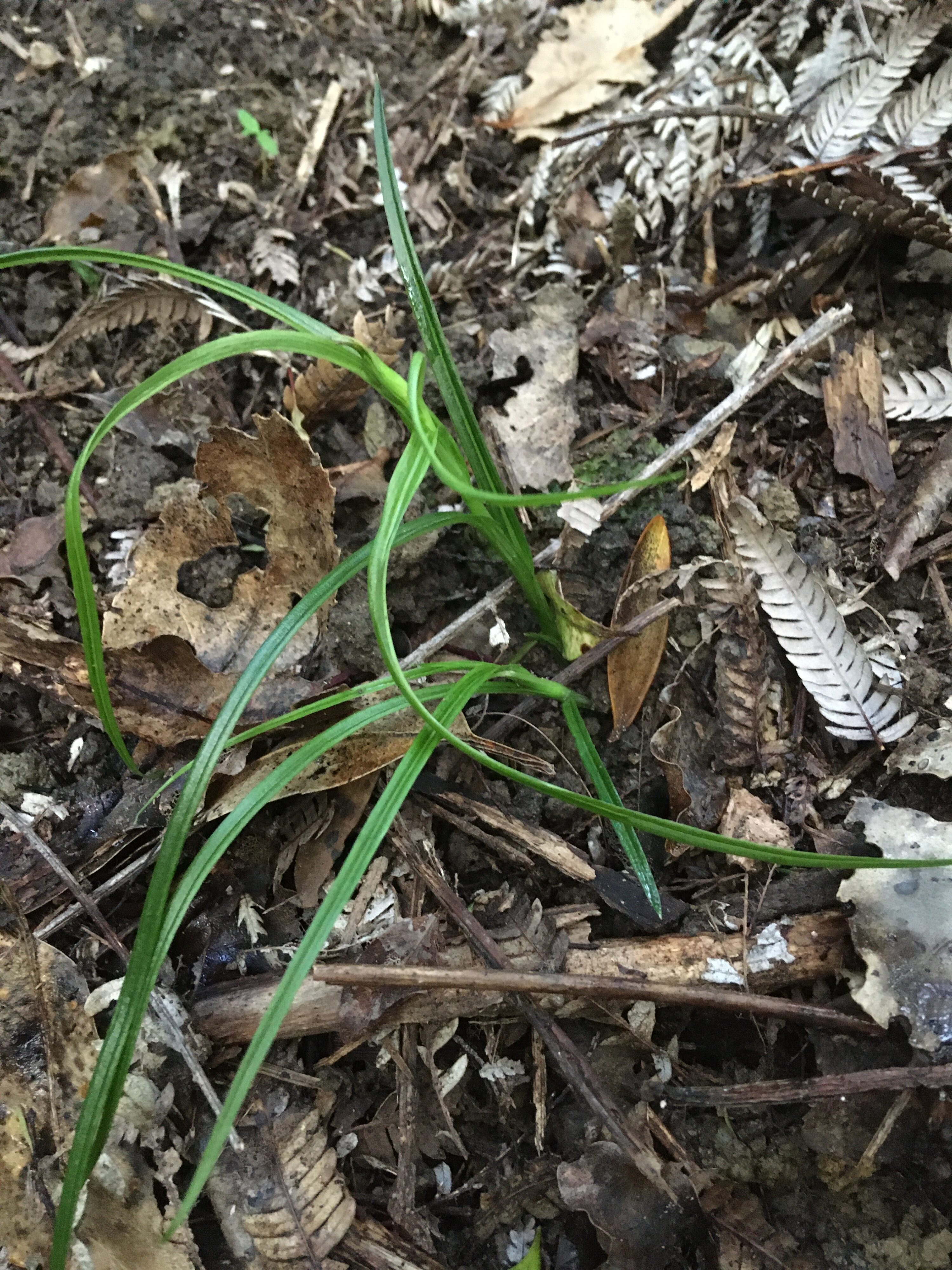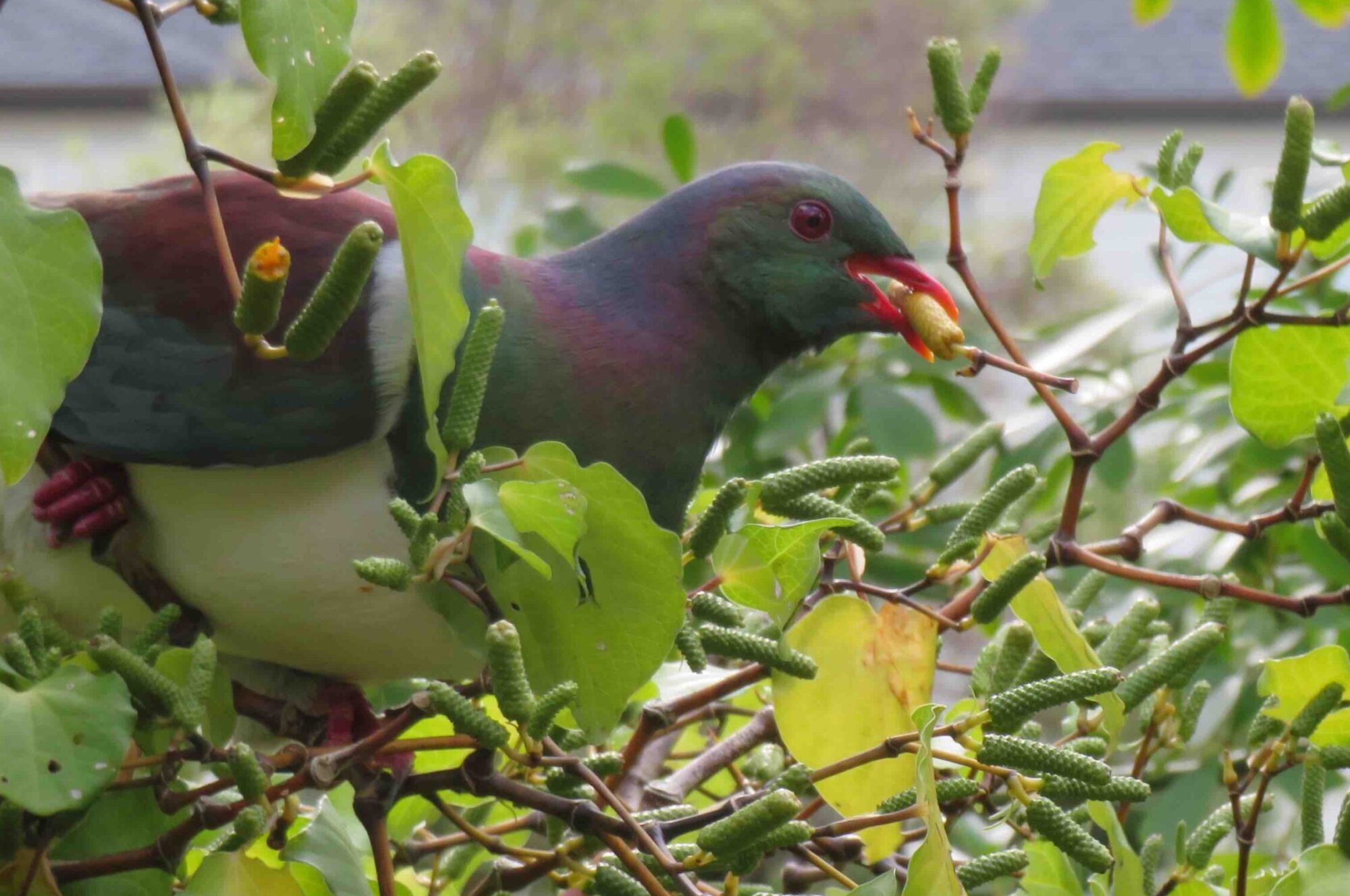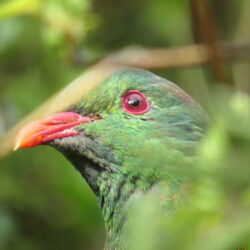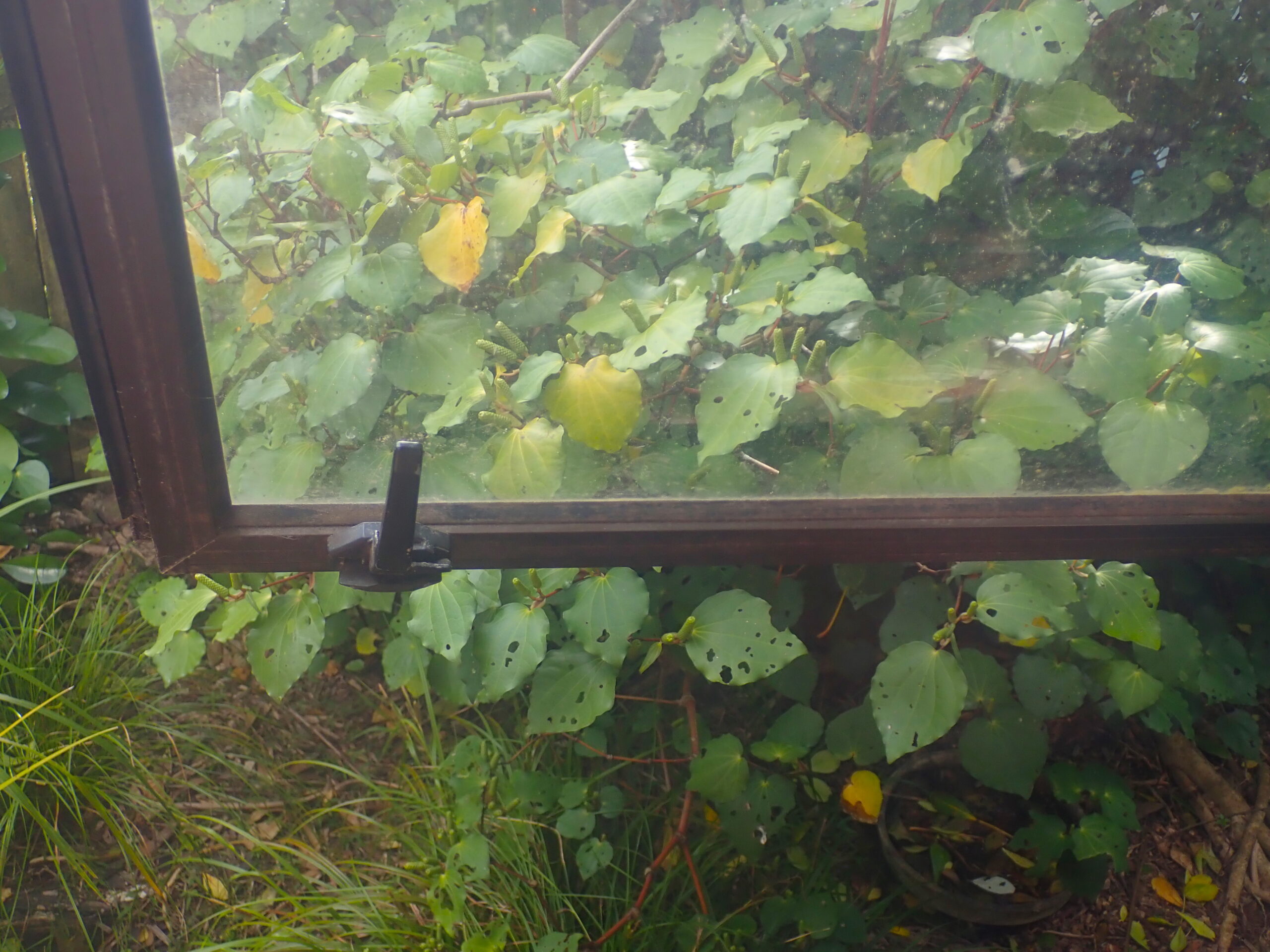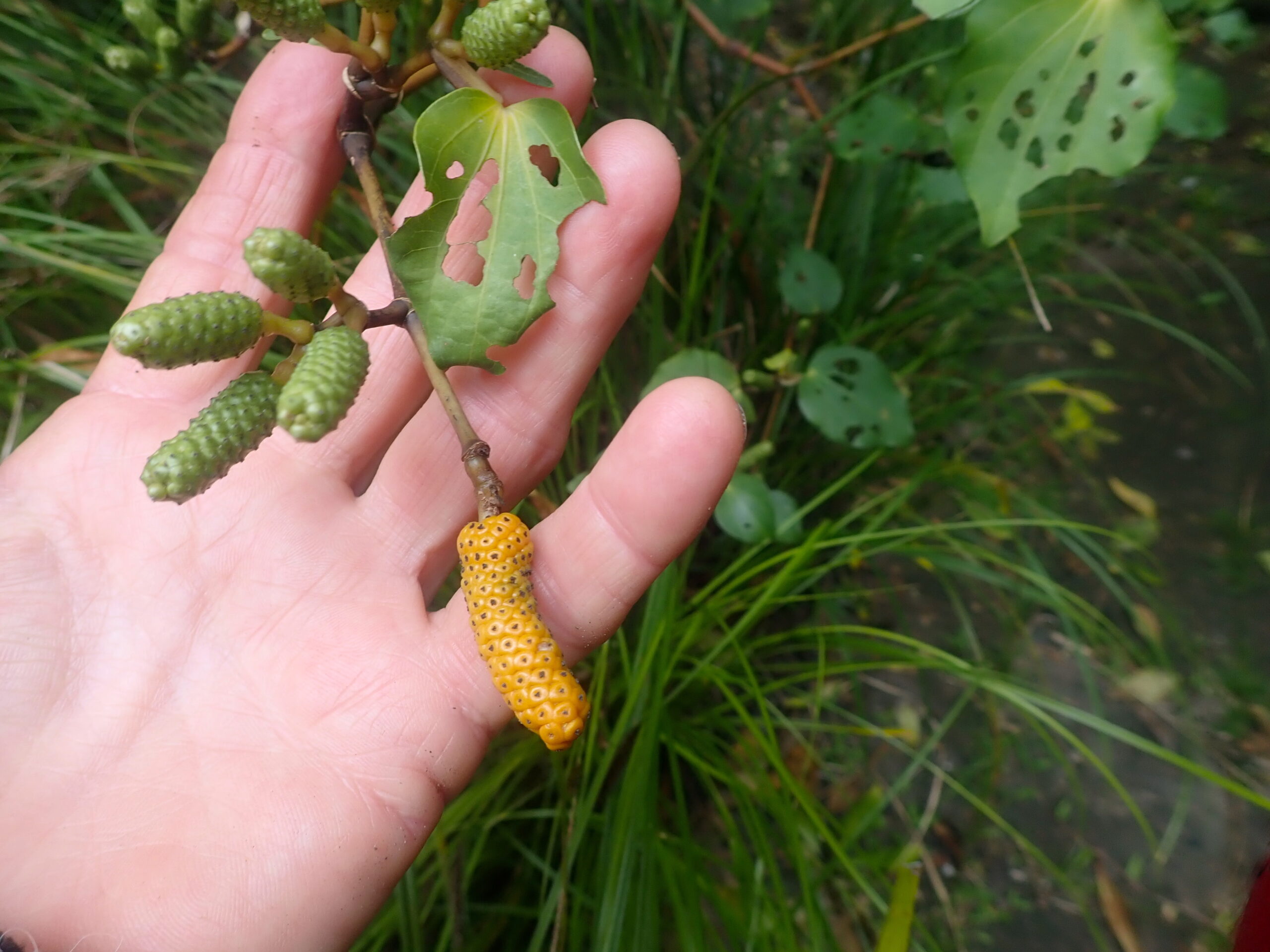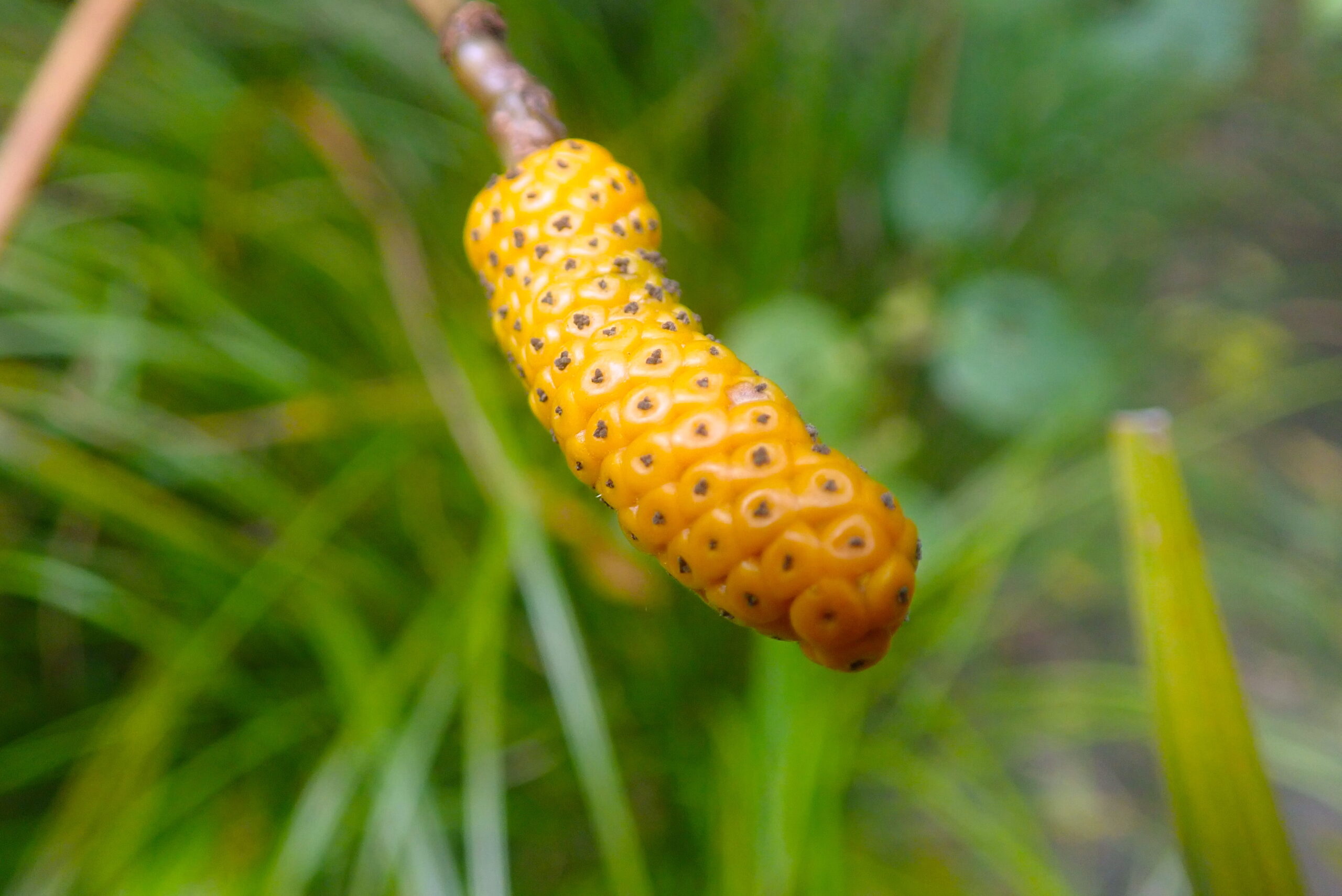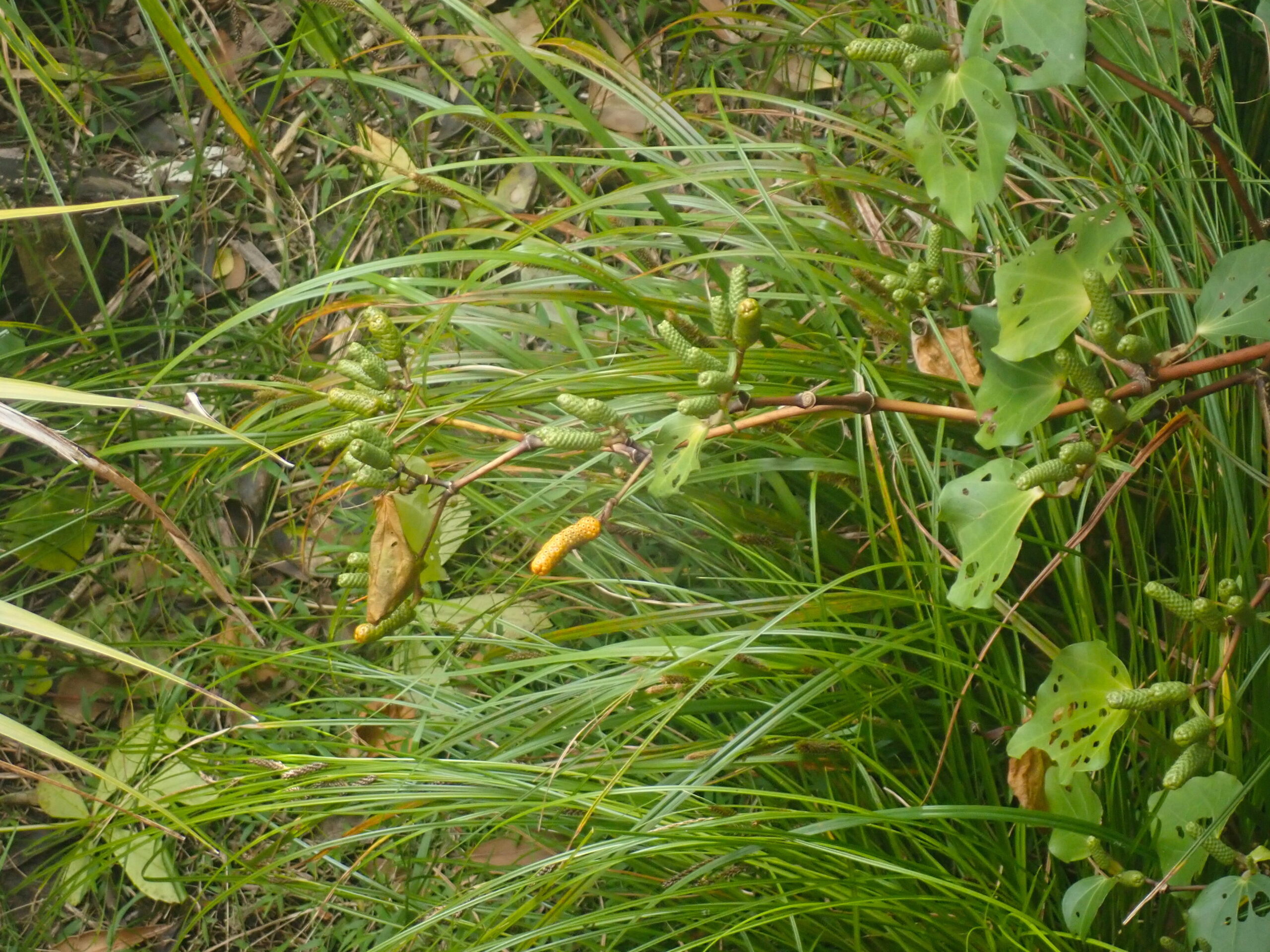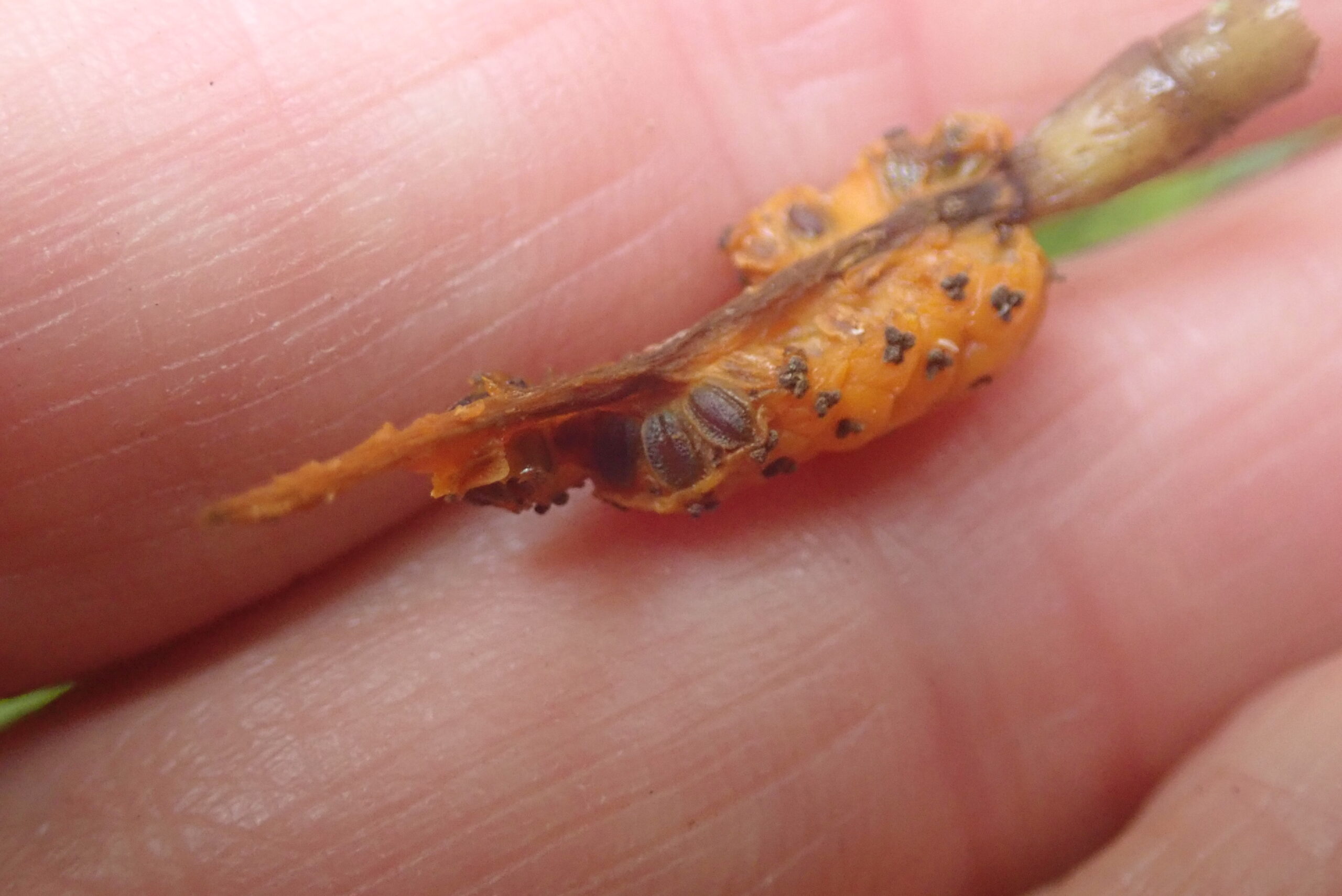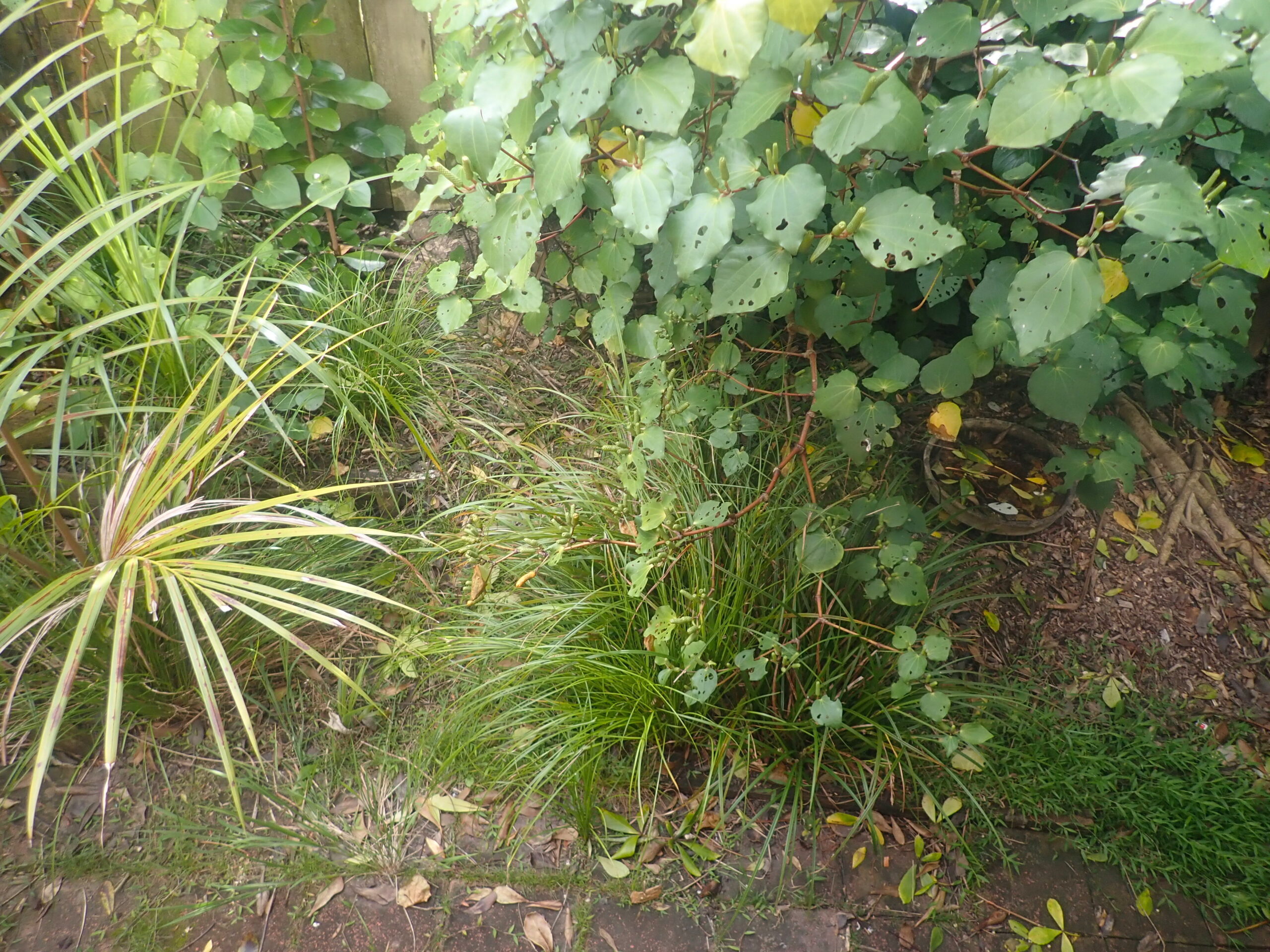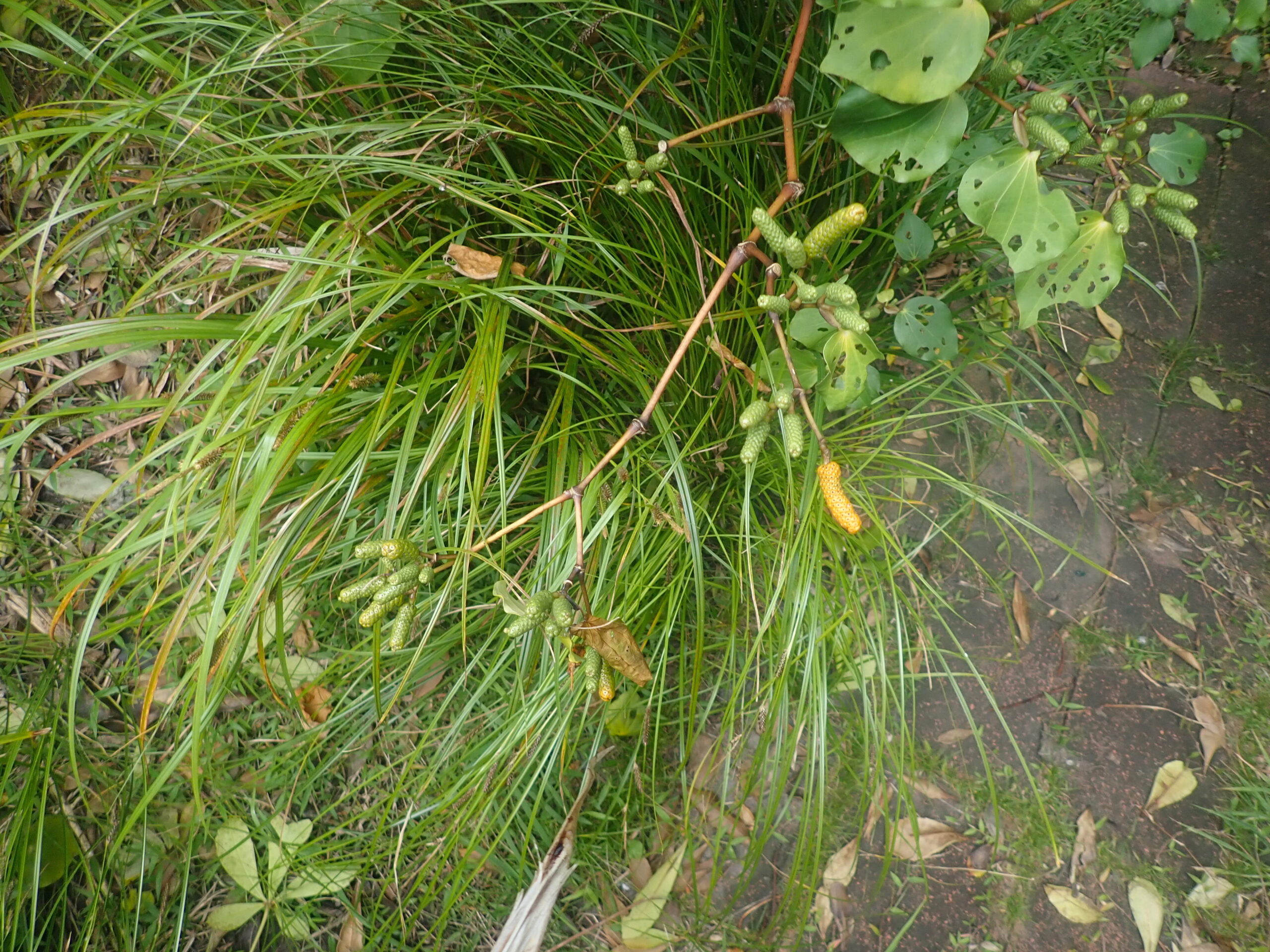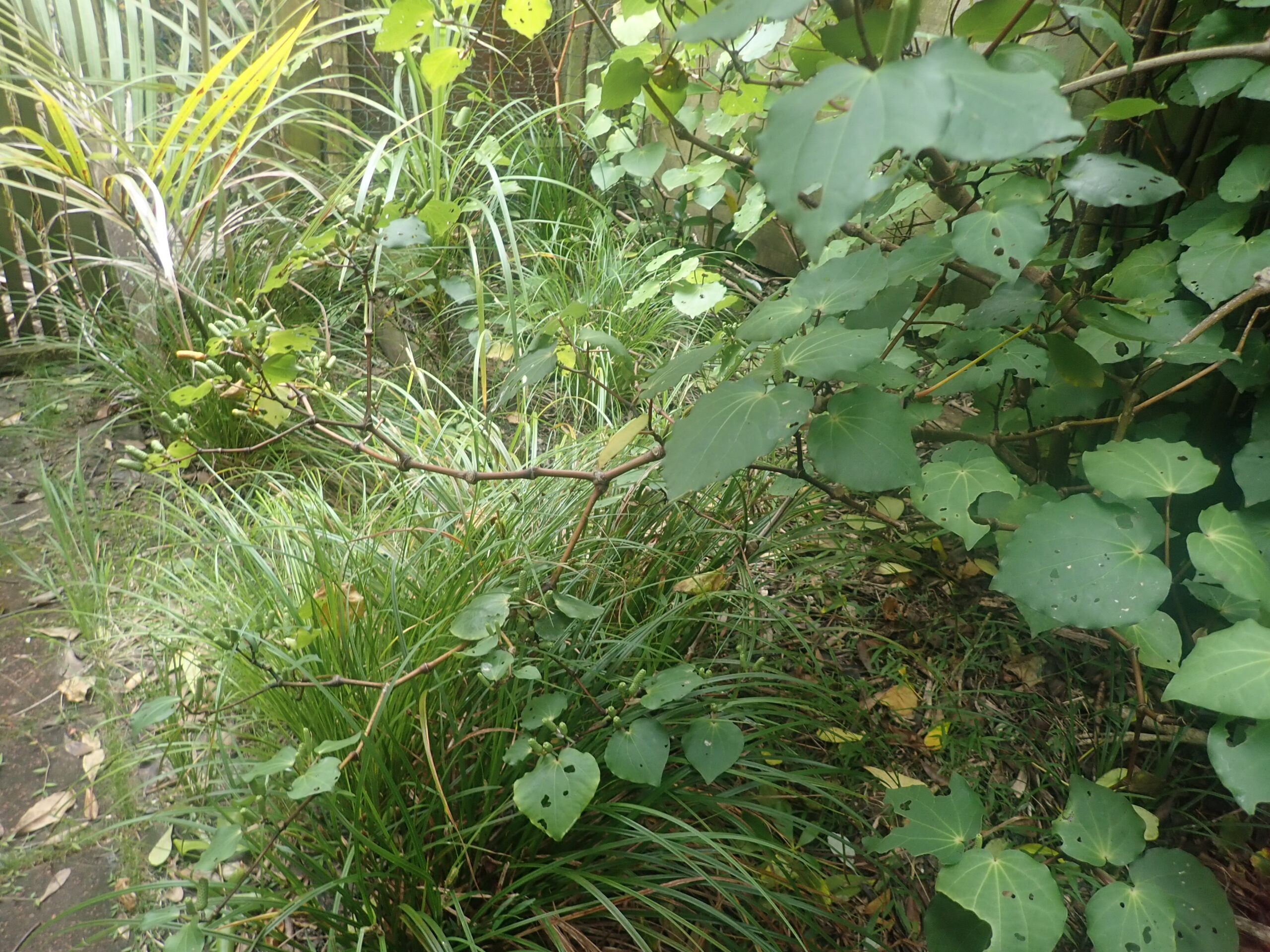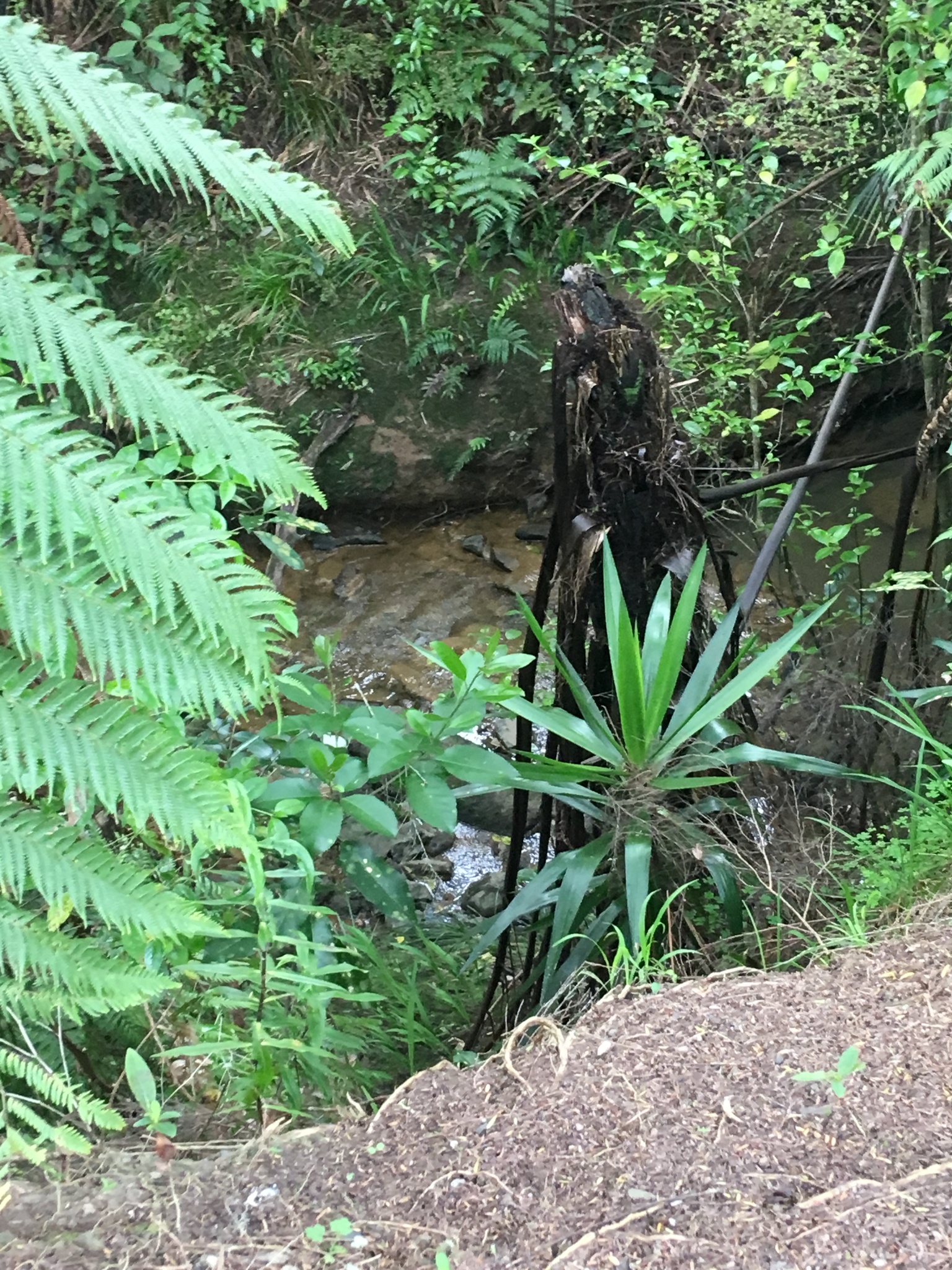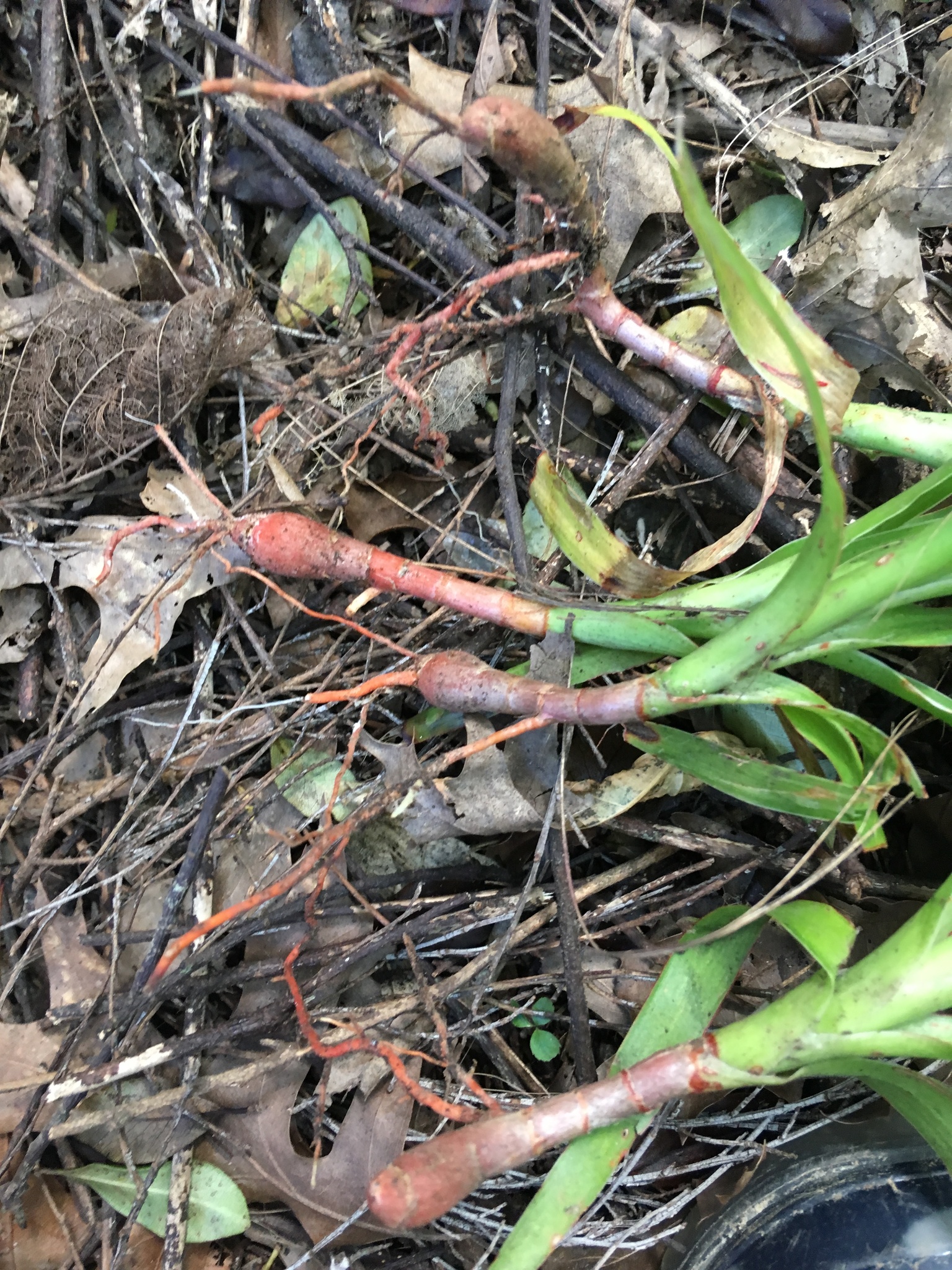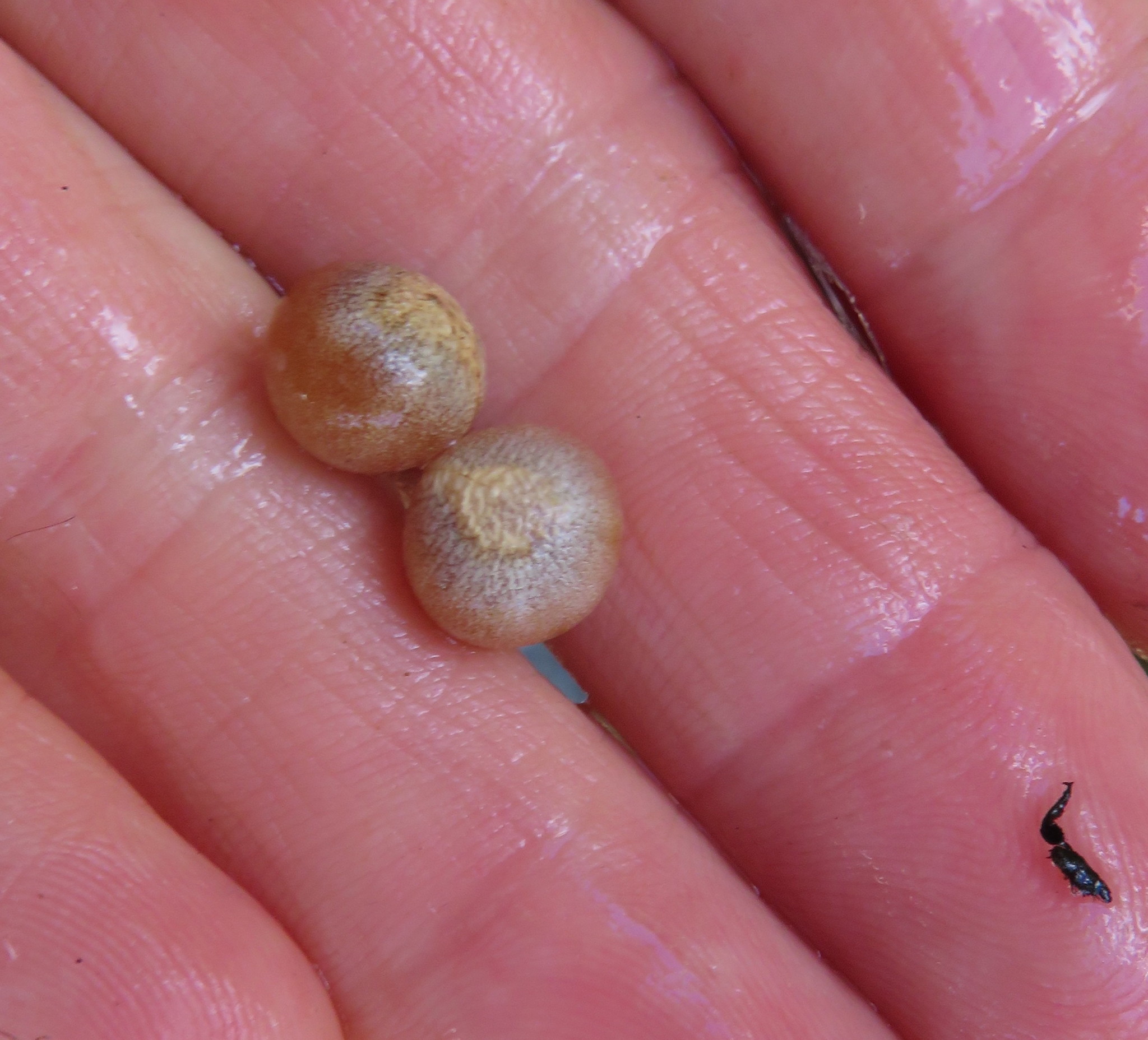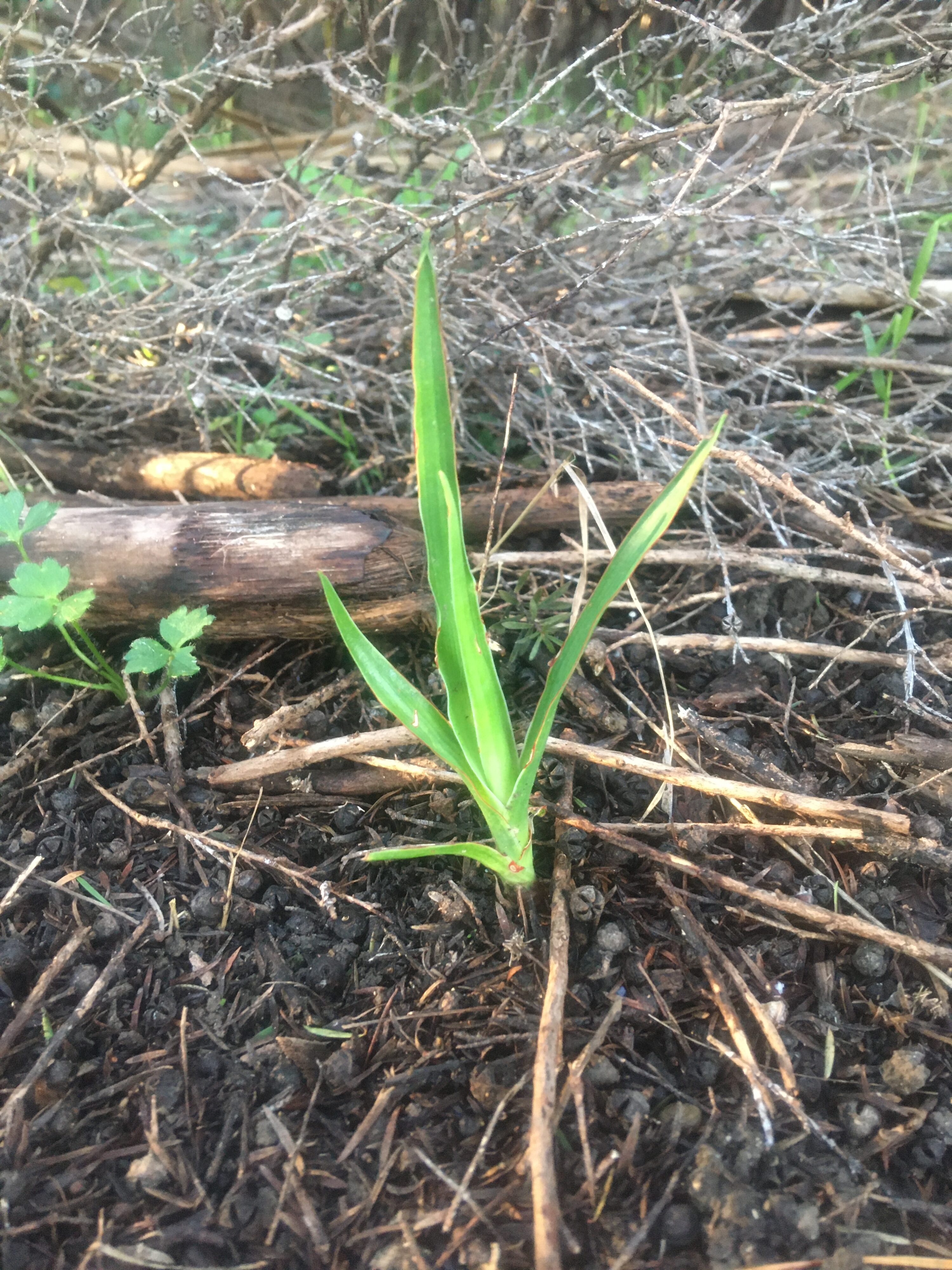Along the new track through the upper margin of Eskdale Forest, bare clay is turning to a variety of native plants, many of which only grow in kauri forest. These gracefully drooping young plants hanging over the edge of the track are Gahnia xanthocarpa, sometimes called “giant cutty grass”, a typical component of kauri forest where sun reaches the forest floor.
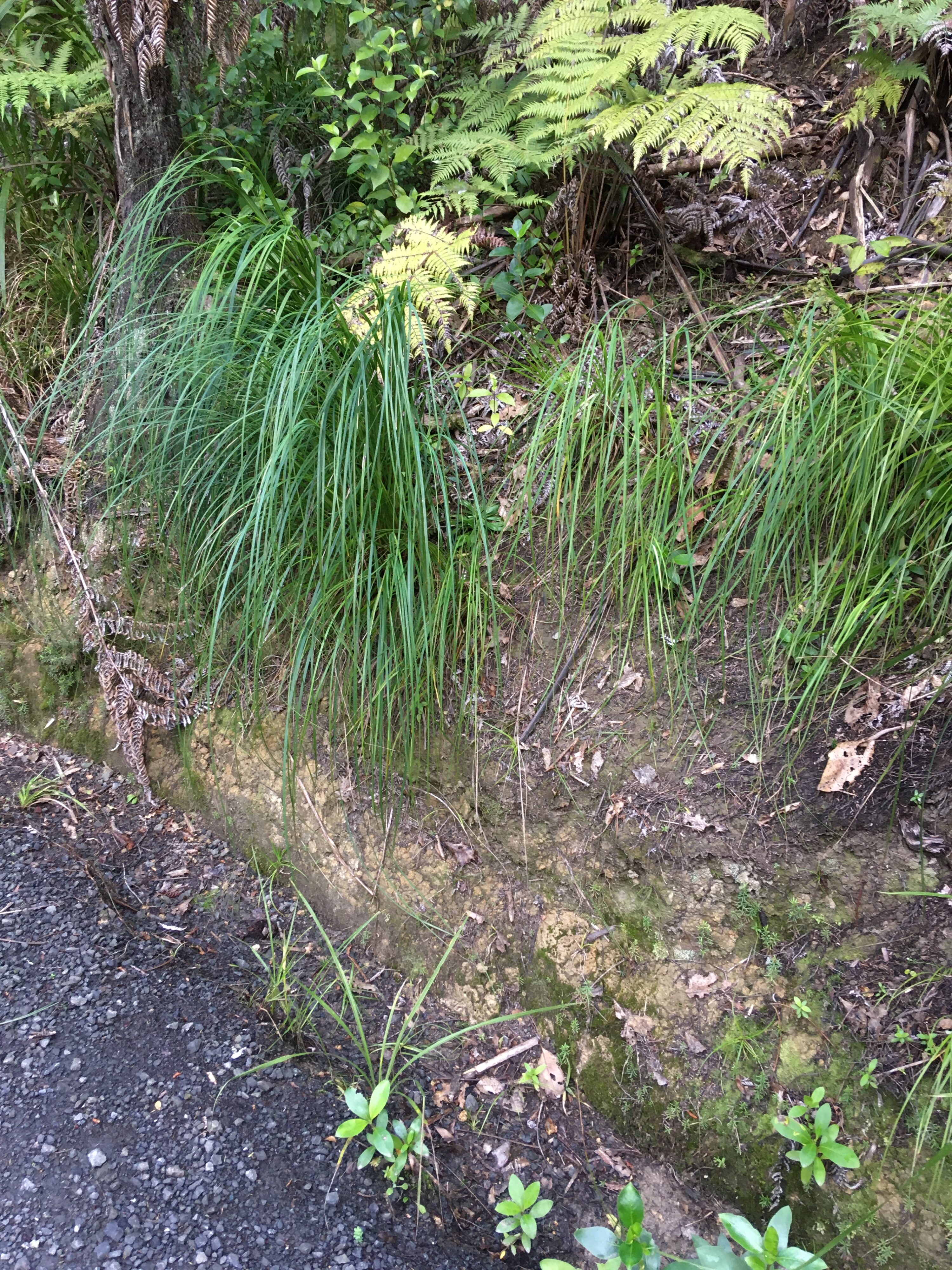
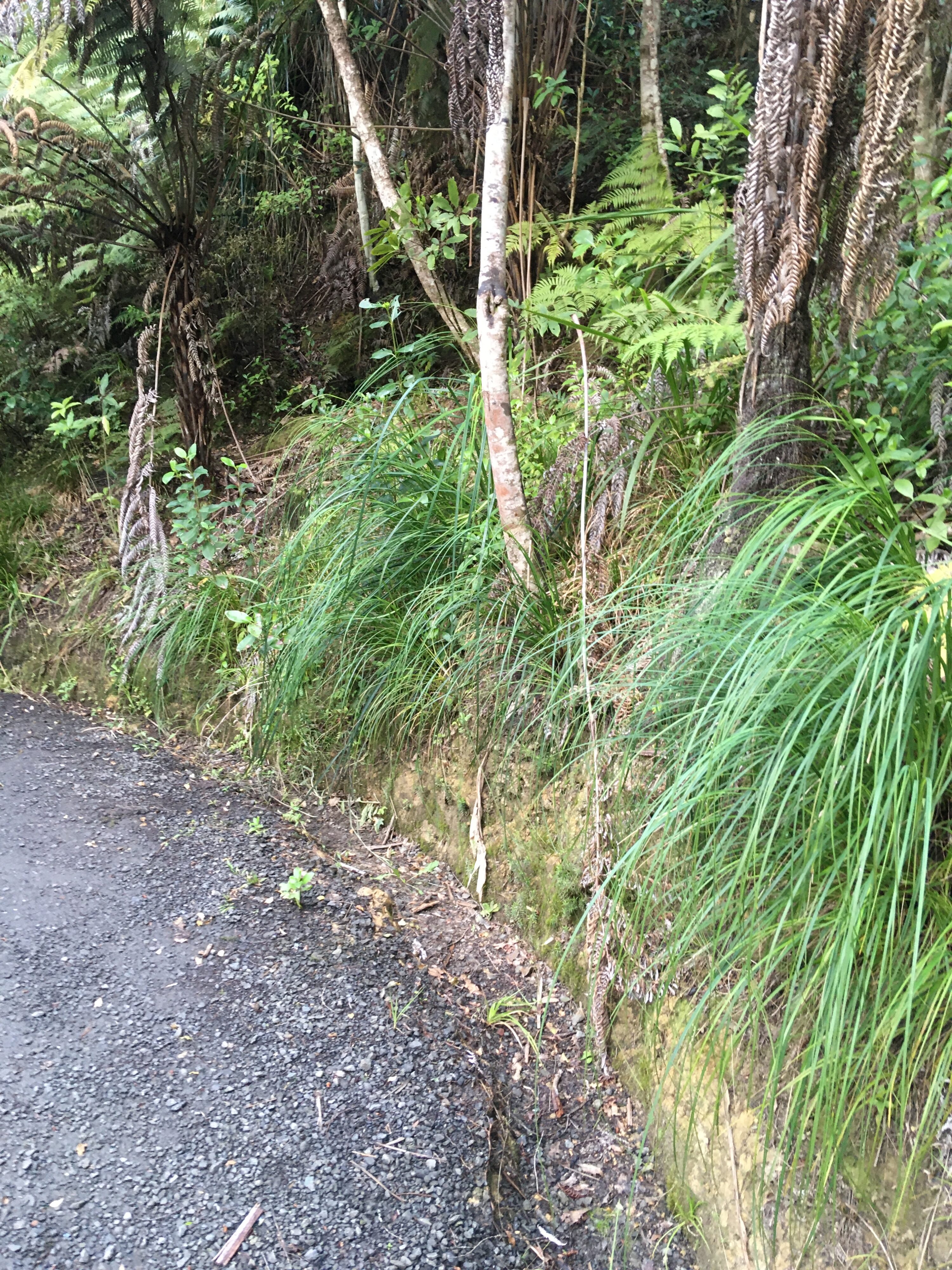
Almost impossible to propagate, they are so well-designed for the harsh environment of low-fertility kauri lands that they have sprouted up all along the exposed clay banks lining the track across the top of the ridge.
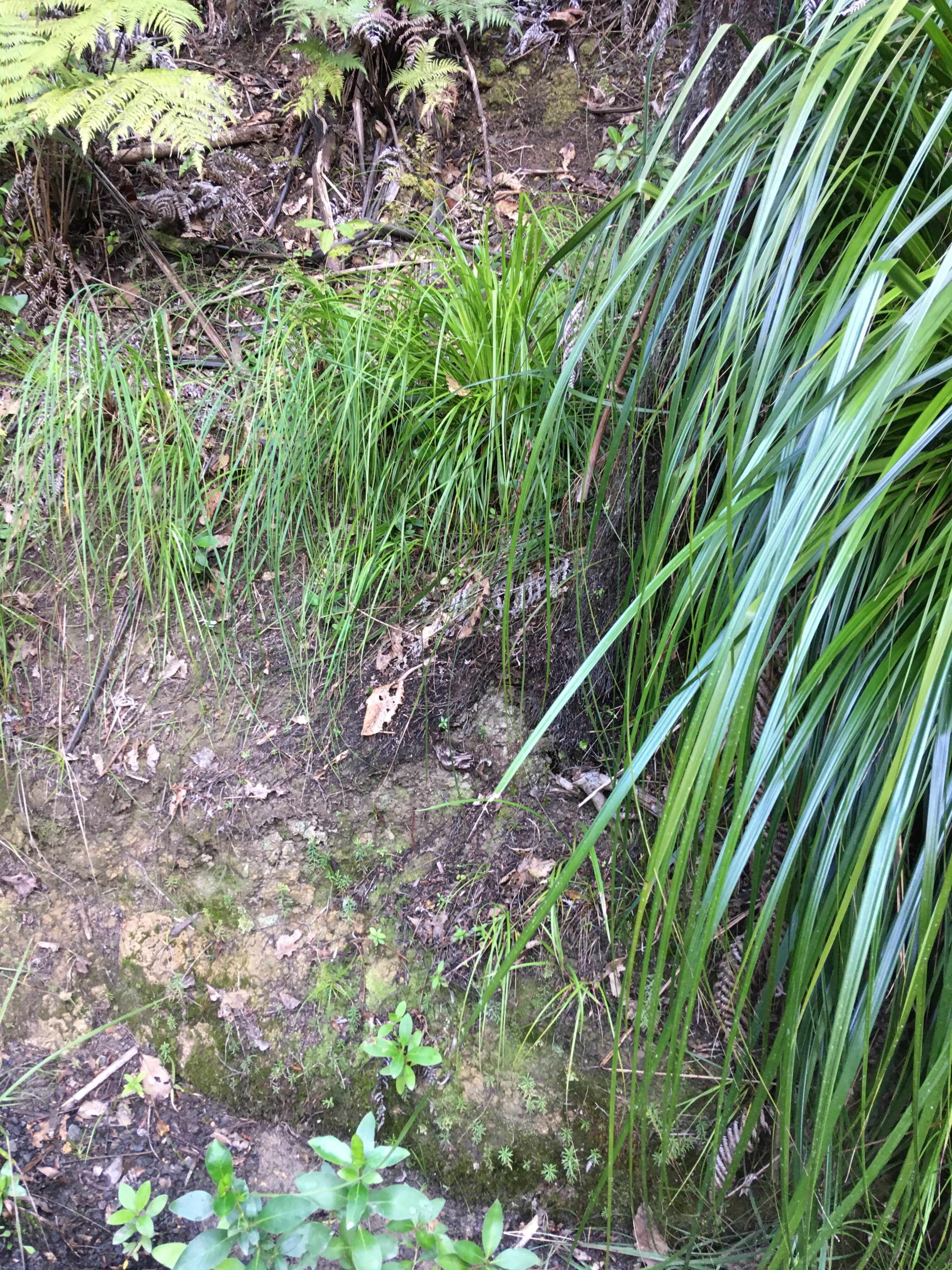
There are a few adult plants among them, their black seeds hanging from tall brittle stems.
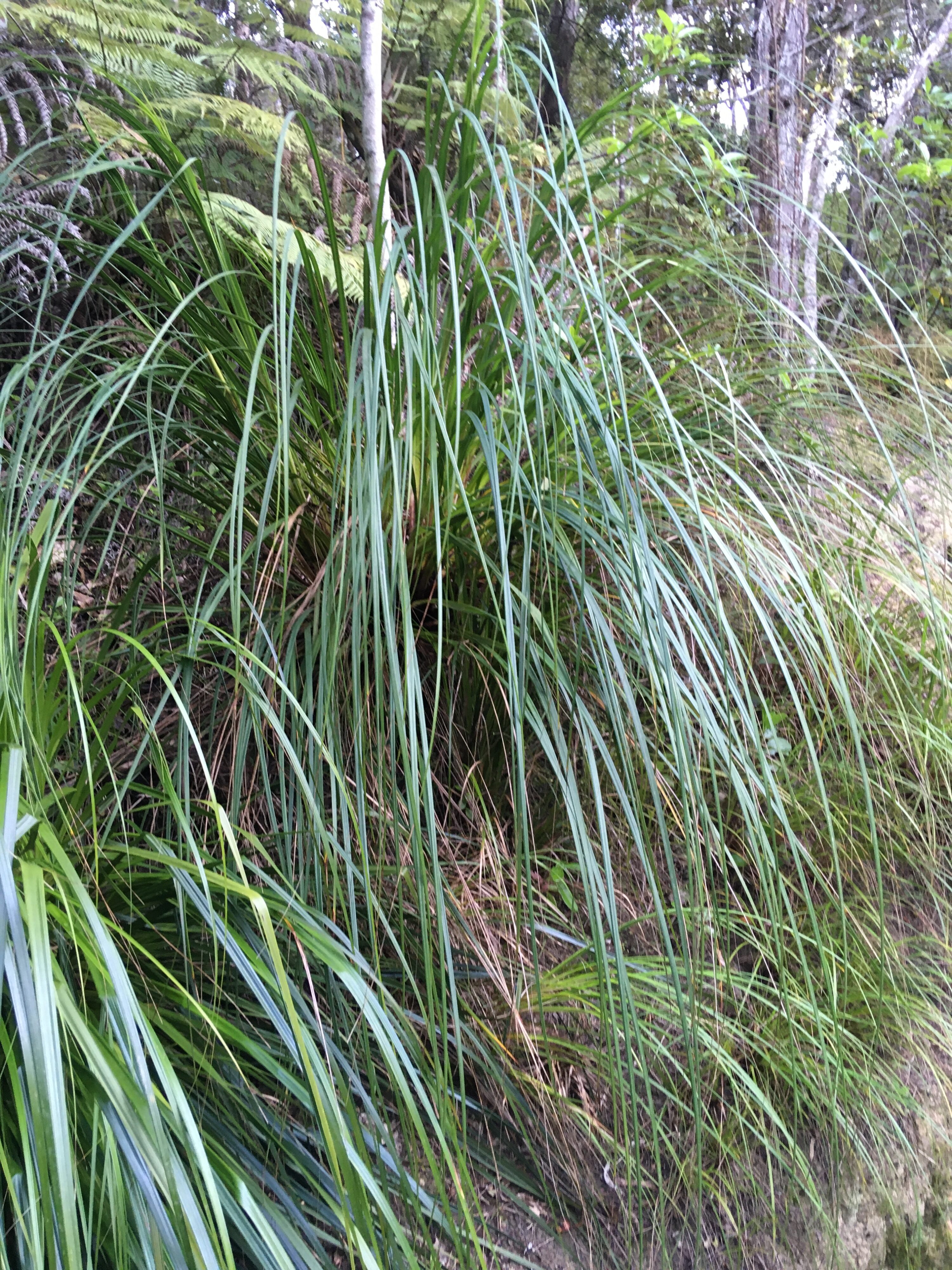
To fully appreciate the value and beauty of this pathside vegetation, see the same bank below in November 2020 during track construction, when this section of rutted clay bank had suffered temporary loss of even more of its trees, shrubs, sedges, ferns, creepers and mosses.
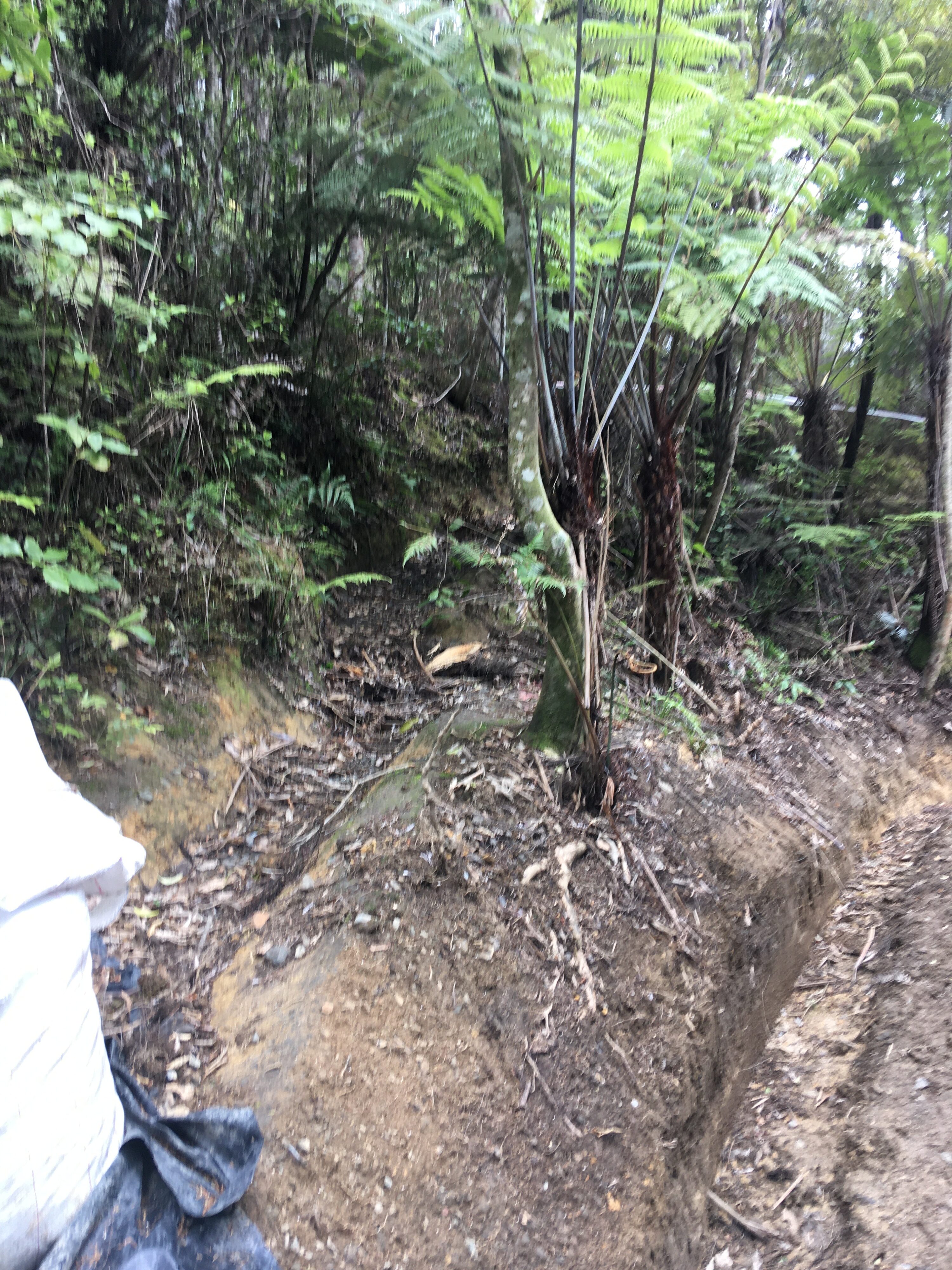
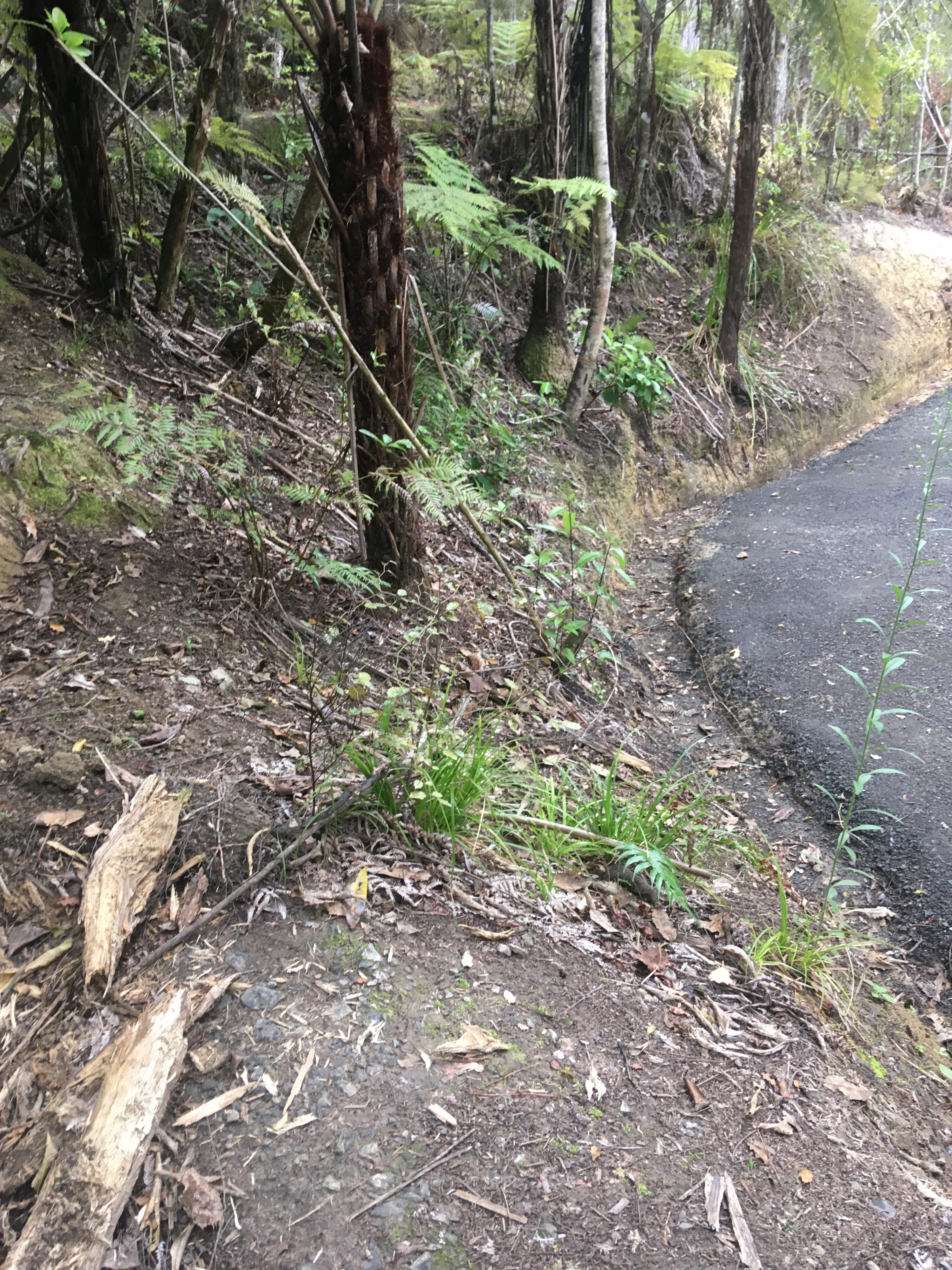
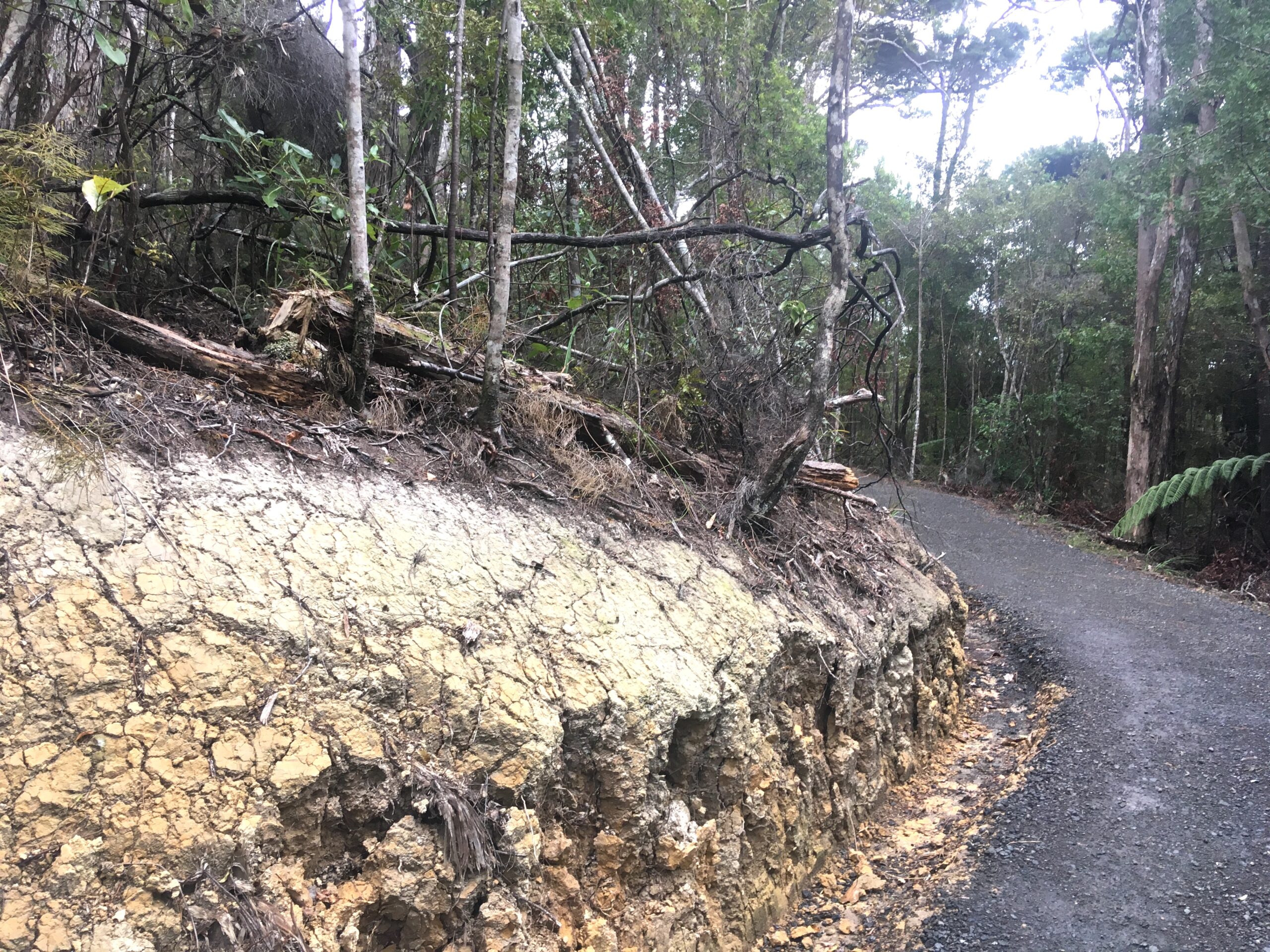
Look for even greater beauty and diversity as the years pass. For example, tiny native orchids depend on the ground being undisturbed, as they only appear above ground during winter. Where old ground has remained undisturbed, they can be seen along the path on almost vertical banks, vitally protected by fallen ponga fronds and leaf litter caught in the undergrowth.
This Grass-leaved greenhood orchid (Pterostylis graminea), which we saw yesterday, has probably reached its full size at about 6cms tall.
